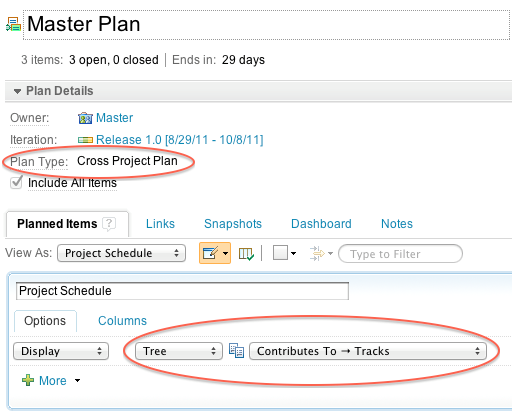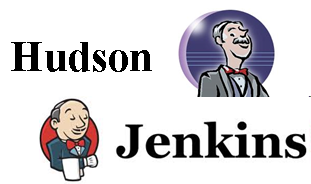While shopping around recently for a more fuel efficient car, I noticed that most of the new features being touted in cars today are software innovations rather than mechanical ones: “infotainment” systems with Bluetooth connectivity, integrated backup cameras for added safety, variable cylinder management to improve fuel economy, and more. What’s driving all this software innovation? It’s being driven by the car buyer’s need for greater safety, for staying connected, and for smarter use of energy. So, how does this relate to teams developing software? Whether you are building an online banking web site, a healthcare information system, or a software component in a new car, one thing is certain: the art of software development is becoming more complex. It requires more communication across the team and the ability to work with outside consultants and suppliers.
In the CLM 2012 release of Rational Team Concert we have focused on making it easier to manage cross team projects, work with external teams, give developers more power and enable RTC to work with the tools you already use today. Here are just a few of the many cool things Rational Team Concert can now do.
Manage cross team projects
Do you have features that need to be tracked in more than one project? You can now create a plan that spans multiple RTC projects and tracks tasks across them. Using our car example, “increase battery life” would involve software change across many different RTC projects and you can now manage that plan feature and its schedule across multiple development teams. The new cross project plan capability makes that possible.
Work with external teams
Do you work with outside consultants who need to see just some work items on your project? In this release you can create global access groups and use them to control work item read permissions. An access group is a collection of project areas, team areas, and users. They have a name and description and can be shared at various levels such as the entire repository, a project area or a team area. This gives teams a lot more flexibility to define permissions independent from team or project structure.
Do you need to protect certain source controlled files from being viewed by an outside consultant working on your project? It’s now possible to protect individual files from read access within a source control component or delete files from source control to permanently remove them from the database.
Be lean. Be agile.
Kanban was invented by Taichi Ohno at Toyota as a system for process control. Kanban in software focuses on optimizing the flow of work. Kanban helps answer questions like “Where is capacity available?” and “Am I exceeding my desired limits for a given state?” Plans now have a new Kanban taskboard view mode where you can set work in process limits to help you visualize the flow of work through the system. By default, limits use Counts, but you are free to choose Complexity or Estimates. Deviations from the ideal are shown as a colored box in the column header. The further your goal is away, the more red the box gets. Think of Kanban as your instrument panel with gauges helping you monitor and achieve peak performance for your team. But it’s even better, because it’s web based and allows the team to monitor status from any location.
Give developers more power
Many of our customers develop applications that require managing many release variants. For example, when you deliver a fix or feature to a series of release streams, you want to verify that you made that delivery to the right releases of your software. In this release, we have a new “locate change sets editor” that makes it easy to find all the streams where a given change set has been delivered using simple drag and drop gestures. If you have kids like me, it’s analogous to remembering the soccer ball, water bottle and jacket before and after every practice. One less thing to worry about!
Have you been working for a while checking in changes to your local workspace and suddenly you make a mistake but don’t notice it right away? RTC has always supported reverting changes, but now we give developers finer control by using their local check-in history to revert back to an earlier known good state. Do you need to lay out files in your workspace differently than they are loaded on the server and be able to re-use that configuration across team members? We’ve got you covered. In this release, you can re-use load rules from files and share those across the team.
Work with your existing tools
Already using Hudson or Jenkins as your build engine? A new out of the box integration allows you to see build health, kickoff new builds and see build results all from within Rational Team Concert. Stay tuned for more after market add-on support for RTC and CLM as we continue a strategy to work with popular tools you already have in place.
Are you developing more mobile applications? We’ve added Mac/OS client and FireFox and Safari browser support on Mac/OS when using the RTC integration with IBM Worklight mobile application development tools. And if you’re developing applications for z/OS or IBM i we’ve improved dependency builds, added new preview and post build reports, included a merge/compare tool in the ISPF client, and extended work item based promotion and deployment to IBM i.
And finally to return to our car analogy. If I’m learning to drive, I can use any car to do so. We think using our source control tools should be the same. Rational Team Concert now includes a new Windows Explorer integration that makes it easy for any user to version content right from within the Windows shell. If you have users who prefer to work outside the IDE or who just need to easily version content then this new user interface is designed for them.
So take the latest Rational Team Concert for a spin and let us know how it handles for you and your team.
Rolf Nelson,
Product Manager, Rational Team Concert
rsnelson@us.ibm.com












































































































































































